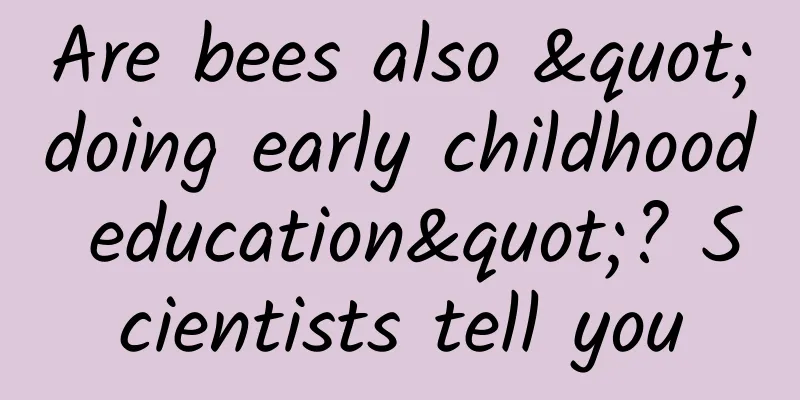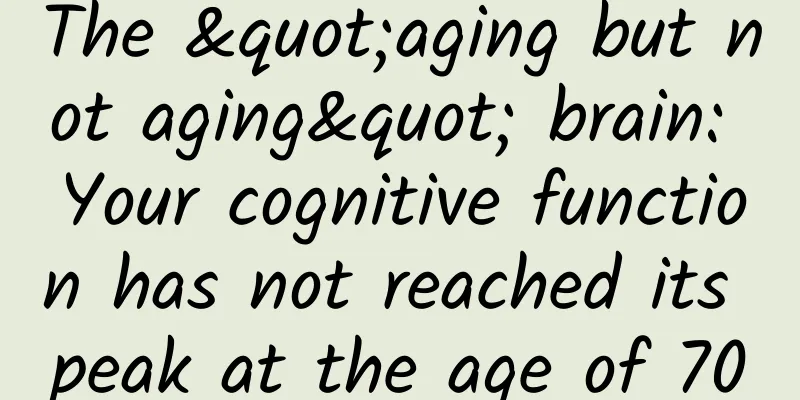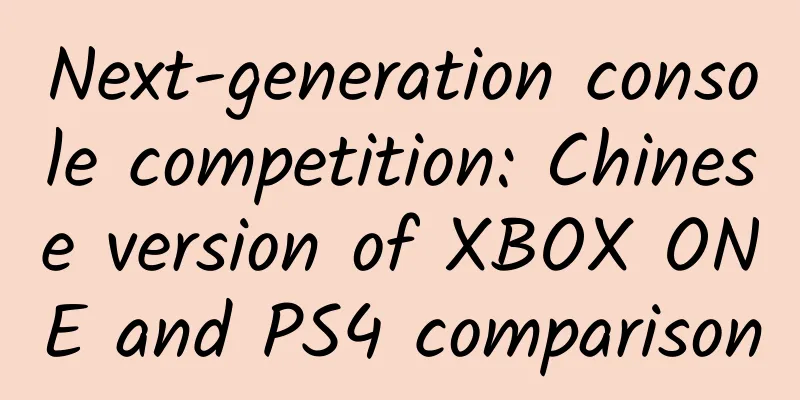Are bees also "doing early childhood education"? Scientists tell you

|
Bees are an important type of pollinating insect. They pollinate many flowering plants and play a vital role in maintaining ecological balance. Bees have a very close relationship with humans. They not only provide humans with products such as honey, bee pollen, and royal jelly, but more importantly, many crops rely on bees for pollination. Therefore, bees are also known as the "wings of agriculture." At the same time, as a social model animal, bees are also widely used in basic theoretical research. Many behaviors of humans and animals are the result of the combined effects of innate instincts and acquired learning. Learning behaviors can be divided into two categories: social learning and non-social learning. Social learning refers to learning between similar animals through observation or interaction. Social learning is very common in higher animals, especially in the unique and diverse culture of humans, which has reached a considerable level through continuous accumulation. Scientists have long been interested in whether animals have the ability to teach by example like humans. Studies have found that many vertebrates can improve their ability to adapt to the environment through social learning. For example, young naked mole rats can learn unique group dialects from older individuals through long-term social interactions. Although social learning in invertebrates has received less attention, scientists have found in recent years that the small brains of insects do not limit their complex learning abilities. Selected as the cover article of Science The bee in the center is performing a dance to communicate the location and quality of the food. The study showed that when young bees follow experienced "dancers" and learn from them, they perform dances that communicate location information better and more accurately. In contrast, young bees that do not follow experienced "dancers" perform poor dances and cannot accurately communicate location information, but as they gain experience, these bees' ability to communicate direction improves, but their communication of distance does not get better. Bees are typical social insects. In order to achieve the best task allocation, accurate information exchange is required between individual bees in the bee colony. The "dance language" of bees is the focus of scientists. The duration, angle, and number of swings of the bee's waggle dance encode information such as the distance, direction, and quality of the food. The bees in the nest receive the information encoded by the waggle dance and eventually find the location of the food. Interestingly, sometimes individual bees performing foraging tasks have never even left the nest, but they can find food by interpreting the information of the waggle dance. After successfully collecting food, they continue to convey information to other bees by performing dance. Is there a "teaching by words and deeds" in the dance of bees? Tan Ken's team from Xishuangbanna Tropical Botanical Garden, Chinese Academy of Sciences, has developed a strong research interest in whether the interaction between young bees and adult bees can improve the dancing skills of young bees. Their latest research results published in Science show that social learning improves the expression ability of bees' "dance language", and the lack of early education affects the accuracy of bees' dance information. This study provides a new model for the study of social learning in insects. The angle relationship between the sun, beehive, and nectar source, and the illustration of the bee dance 1. Create a new bee colony model: all-larvae experimental bee colony The researchers adopted a new experimental model and first created a bee colony composed entirely of young bees that had just left the hive. Compared with bees growing up in natural bee colonies, bees in young bee colonies lost the opportunity to learn to perform dances from experienced forage bees during their growth, just as infants and young children lost the opportunity to learn and interact with adults in the early stages of their growth. During the experiment, the researchers first trained the forage bees in young bee colonies and natural bee colonies that were ready to leave the nest, and marked them one by one when they visited the feeder 150 meters away from the hive. When these marked forage bees returned to the nest and began to dance, their dance was recorded with a camera, and data was collected and analyzed for multiple indicators such as the duration, angle, and number of swings of the dance. By comparing the various dance indicators of bees of the same age in young bee colonies and natural bee colonies, the study made important discoveries. Tag forage bees and photograph their dance after returning to the nest 2. Lack of early childhood education has a lifelong impact on the accuracy of bee dance The results of the study show that the dances performed by young bee colonies that lack the opportunity to interact and learn from experienced bees have obvious defects and errors. Although bee dance is an innate behavior, the error of the dance swing angle (indicating direction) will decrease with the accumulation of collection experience, but the error of the swing time (indicating distance) will never improve. In other words, social learning plays an important role in the inheritance of the "dance language" of bees. The lack of early childhood education has led to the development of a new "dialect" of bee dance, which will be maintained throughout life. Results of experimental bee colonies (E1 is 9-day-old young bees, E2 is 30-day-old adult bees) and natural bee colonies (C1 is 9-day-old young bees, C2 is 30-day-old adult bees) on the indicators of dance direction accuracy A (Directional accuracy), nectar source distance B (Food distance), dance quality D (Dance quality) and dance disorder ratio (Divergency angle error vs. disorder) 3. The first discovery and confirmation that the dance of adult bees has a teaching function The study found for the first time that the dance of adult bees has a teaching function. Learning from adult bees can improve the accuracy of young bees' dance behavior. Social learning shapes the dance language of bees. Bee dance is like the language communication of vertebrates such as humans and birds. Novices can better acquire skills by learning from experienced individuals than by exploring on their own. The study also confirmed that invertebrates with very small brain capacity also have the ability to "teach by words and deeds". Mutual communication and learning are the cornerstones of the success of bee society. This study has important scientific implications for exploring the origin and evolution of human and animal language. |
<<: Snail rice noodle with cherry blossom flavor? Someone actually cultivated it!
Recommend
I am usually too busy with work to have time for exercise. Can it be effective to make up for it with exercise on the weekends?
Life is movement The benefits of exercise are wel...
"Warcraft" is a huge hit! The box office has reached nearly 600 million in two days. Why is it so popular?
"World of Warcraft" became popular afte...
A man was rejected on a blind date because of a change in his palm! Do you have any of these symptoms?
"Slow down on your blind date, you should go...
Tesla voluntarily recalls 7,000 faulty charging adapters
Tesla has announced it will recall 7,000 charging...
Why is it so easy to gain weight, but so difficult to lose weight?
Reviewer of this article: Chen Haixu, Deputy Dire...
Advertising: 8 creative writing tips to increase your click-through rate!
We all know that the role of creativity is to att...
There is a way to save your old iPhone. Changing the region to France will make it run much more smoothly. I tried all three iPhones.
In the past two days, a statement suddenly spread...
Is no one doing anything about the startup company crying thief when it comes to fraud?
The venture capital circle seems to be experienci...
Nicolas Cage (Nicolas Cage) movie collection collection 20 high-definition English subtitles Baidu cloud download
Nicolas Cage Movie Collection 20 HD English Subti...
Useful information: A comprehensive promotion strategy for Internet new media platforms!
Today, new media with social attributes represent...
Will Apple, which has made one stupid move after another, become the next Nokia?
When the Samsung Note7 bombed, Samsung, Apple'...
Beware of hidden salt! Say no to "heavy taste"!
Not long ago, the "Dietary Guidelines for Ch...
How to become a global energy storage company in less than 6 years? Ruipu Lanjun gives an innovative answer
The development of the energy storage market this...
Leading the world! The JF-22 super-high-speed wind tunnel, a national heavy weapon, passed the acceptance inspection. Let’s read the expert’s interpretation!
Not long ago Construction in Beijing Huairou Scie...
The "forbidden zone" that became popular overnight has become a "scenic spot". What makes people love and fear Ailao Mountain?
During the just-passed National Day holiday, Yunn...









